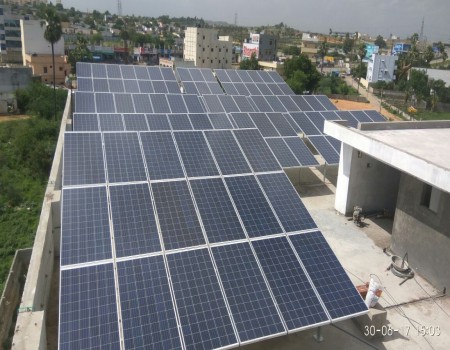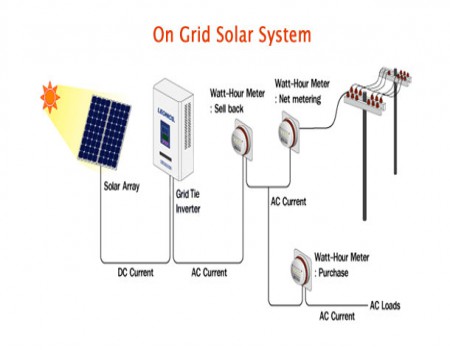- Valcan Solar is a Solar System Integration Company in the Renewable Energy Resources sector committed to deliver clean, green, sustainable future for society, industry and generations to come through long lasting partnerships with organizations and institutions for generating awareness and promoting technologies. The company is focused on innovative approaches to commercialize solar solutions. Our products are made to meet rigorous international standards like BIS, ISI, MNRE, TUV etc. We offer a very wide range of solar products for different applications- Solar Power Plants Systems, Water Heating Systems, Street Lighting Systems, Security Fencing Systems and UPS. Each product is designed to ensure maximize power savings, efficient use of energy, sturdy equipment.
SOLAR ROOF TOP ON GRID SYSTEM
Technology routes the conversion of Solar Radiation into Heat and Electricity, namely, Solar Thermal and Solar Photovoltaics. Solar also provides the ability to generate power on a distributed basis. A Grid-connected PV system consists of Solar Panels, Inverters, a Power Conditioning Unit and Grid Connection Equipment. They range from small residential and commercial rooftop systems to large utility-scale solar power stations.
When the sunlight hits the solar cells on a rooftop solar panel, it converts particles of sunlight (photons) into electrons of direct current (DC) electricity. The inverter regulates and converts the energy generated into utility power requirement (Single/three phase output) the inverter syncs this power with the utility power and feedback to the utility grid. There are no batteries involved and all the excess power after utilization is fed back to the grid. No batteries make this system relatively cheaper and easier to install than the off grid system. Since the batteries are not involved there are no storage losses involved and it serves effective utilization of the generated power.This system allows power to be used from the grid supply only when the rooftop solar system is unable to supply the required power. A grid-connected photovoltaic power system will reduce the power bill as it is possible to sell surplus electricity produced to the Grid.

Benefits of On Grid Solar System:
1. Cost-Effective:
The grid-tie system does not cost much.The justification of this benefit is that we do not need batteries, therefore costs accompanying these batteries will not be faced.This system can provide help in reducing electricity bill expenses through investing in the on-grid system.
2. Reliability:
In daily life, you always need more power, so imagine that you face power shutdown.
3. Net Metering:
Net metering indicates a billing process that provides more power for the users who consume more than the home needs and it works as follows.When you consume more, the meter spins backward instead of forward, therefore you get a credit to balance your future payments, and here the power grid plays an important role in storing all unused energy for future needs.
4. Clean Environment:
The grid-tie solar system uses a clean and renewable power source to generate carbon-free power, therefore, this affects positively not only on humans but also the environment.As there is no use of batteries, this decreases the contamination levels and saving the environment.
5. More Than One Use:
It’s worth mentioning that the use of photovoltaic cell components is not only generating energy but also has a vital role in raising the selling point through adding a modern and technological-related appearance as well as reduce construction costs.
6. Suitable For Both Residential & Businesses:
Some advantages here are not limited to residences, yet they cover all business and commercial forms requiring generating more power on sunny days to use the generated power in the night. However, businesses and industrial companies can recoup their investment costs by offsetting their electricity within only 3 to 8 years and can depreciate their project value in about 4 years.
Final Word:
The on-grid solar system is a source of renewable energy that has enormous benefits and features including high performance, great reliability, convenient costs for both people and companies as well as long lifespan and high-quality components. It’s highly recommended to install this system so that you can save money, reduce expenses and protect the environment from pollution.

